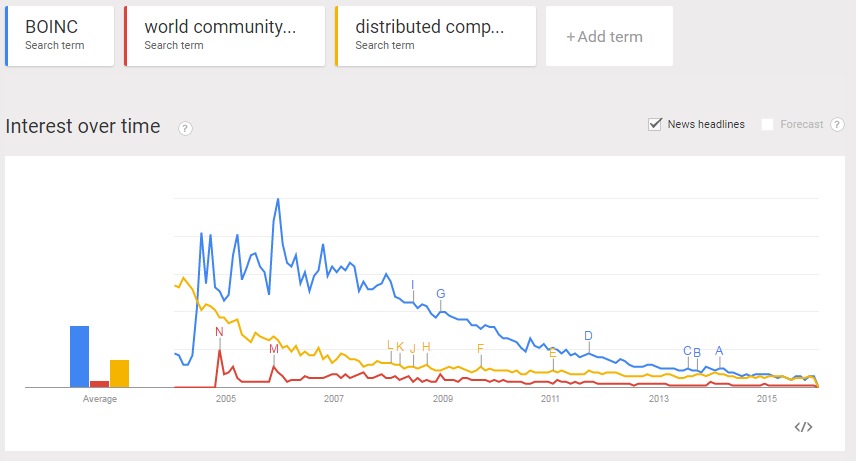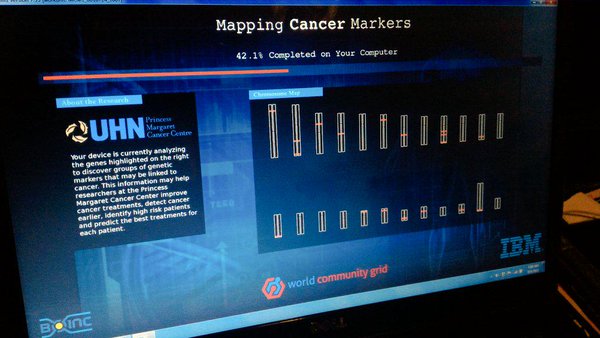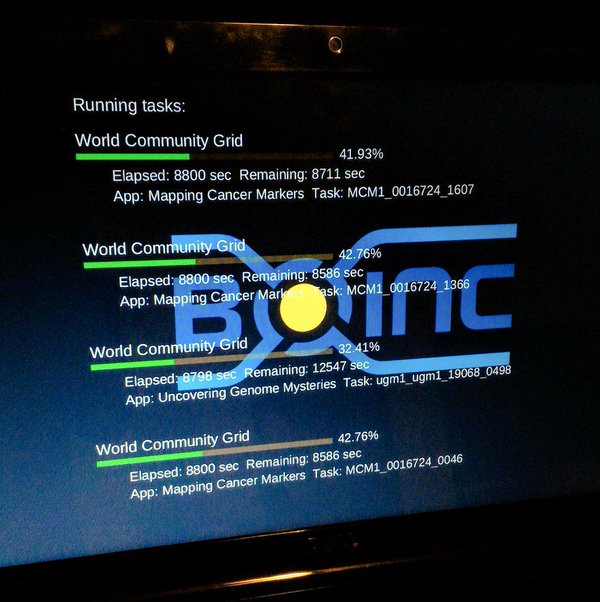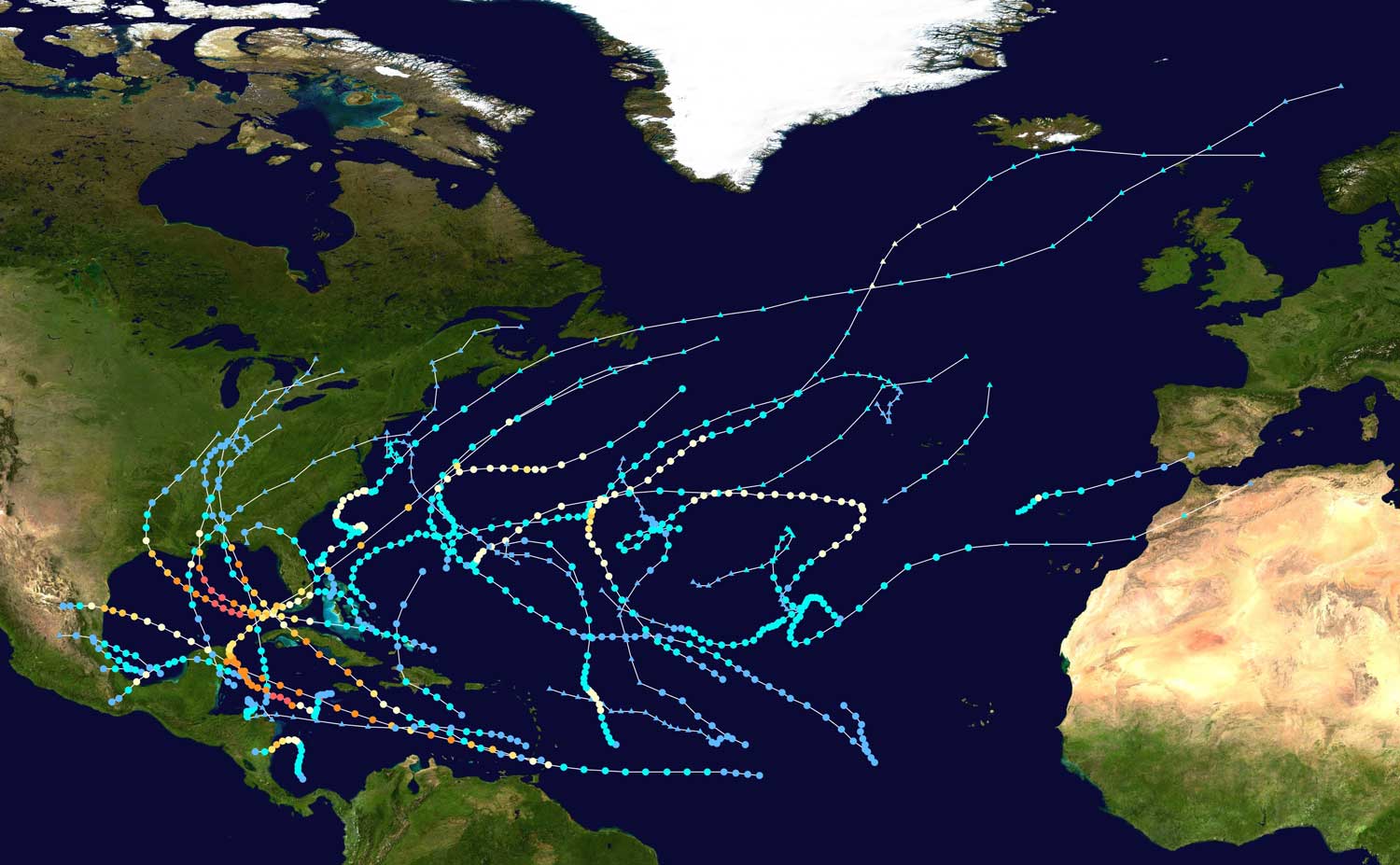A group of California computer scientists has built a tool for analyzing climate change, mapping clean water access, and formulating strategies to eradicate malaria, cancer, and AIDS, all using a system they can rightfully claim to be the most powerful computer network on the planet. And here’s what they want to talk about: How paltry the whole thing is. The Berkeley Open Infrastructure for Network Computing may be rocking 157 petaFLOPS (and counting), but it isn’t nearly as muscular as scientists thought it would be when the idea of volunteer computing emerged in the mid-‘90s.
When it became clear in the early aughts that projects like BOINC and IBM’sWorld Community Grid could leverage middleware use of the spare computing power on huge numbers of PCs to solve massively parallel problems (think:scanning astronomical data to find extraterrestrial life) by running simulations, the consensus among researchers was that the future of data-driven investigation had arrived. In a sense, it had. The technology remains awe-inspiring, but it still isn’t self-sufficient. In order to grow, BOINC needed to generate enthusiasm, to sign people up, to make studies of pulsars and peptides feel like a movement. That never happened.
I’ve been volunteer computing for BOINC since the late ‘90s, when I was an undergrad at the University of California-Berkeley. Since then I’ve installed the software on half a dozen new computers and tracked volunteer computing statistics as they have, depressingly, slumped. The attrition is easy to spot. The systems count millions of total volunteers, but the data make clear that only a few hundred thousand are actively returning results. And this for software that could run on machines numbering in the low billions globally. (If you want to join us, check out this 10-minute guide to getting started.)
Public relations efforts around volunteer computing have been uniformly amateurish. The sum of the project’s recruiting is a page on BOINC’s website that you have to really study to understand. And it’s incredibly outdated, giving volunteers tips on how to write letters to computer magazines in countries around the world to boost exposure. “To get a magazine to write about BOINC,” it reads, “you need to convince them that there’s something new and exciting.” The site also urges volunteers to update the page when and if they reach out to media, so as not to duplicate efforts. As of this writing, the last such update was in September 2014.
For an explanation, I reached out to Dr. David Anderson, BOINC’s project director, architect, and developer. He’s an adjunct computer science professor at the University of Houston and a research scientist at the University of California-Berkeley, and is the project director of SETI@home. His day jobs don’t allow for spending much time or funds pursuing volunteers to join in BOINC.
“We (BOINC or, prior to that, SETI@home) have never advertised; we have no budget for doing so,” Anderson told me. Mass media coverage in the early days of volunteer computing about 15 years ago stirred some 2 million people to join the efforts, he says. “After that it was harder to get media coverage; outlets don’t like to run stories that are similar to previous stories. Even for something like the release of BOINC for Android, which I think is big, we were able to get only a smattering of coverage.”

As media coverage of BOINC, World Community Grid, and distributed computing waned, so has public interest. Here are the trends in Google searches during the past decade.
“My research group has huge hopes of understanding the entire molecular space, which is composed of 10^60 to 10^180 synthesizable molecules. So far, we have concentrated on the organic photovoltaics (‘plastic’ solar cells) area in collaboration with the World Community Grid. … If I were to have say a hundred times more volunteers, we could turn the project into the ‘Molecular Space Project’ and we could undertake a vast cataloguing of a sample of a diverse set of molecules in chemical space to search for molecules with extreme properties for a variety of applications that could range from energy to technology and even health.”In other words, we could be cracking open the secrets of every extant or possible molecule. Instead, we’re playing League of Legends and Angry Birds Transformers. And that criticism is actually reductively generous: We could be doing both.
To understand how regrettable this state of affairs is, we need to make a rough estimate of how much more computing capacity the world has in 2015 than in 2000. A 2011 study by researchers at UCLA and in Barcelona found that between 1986 and 2007, that annual growth in computing power averaged 86 percent. If that pattern held during the past 15 years, the increase works out to more than a 10,000-fold leap. It’s a shame that all that raw power just sits around on your Galaxy S6 pinging your email server, or loiters on your Macbook waiting to download the latest iTunes update. Even with the tiny adoption rate, volunteer computing is accomplishing great feats: informing IPCC climate reports, the discovery of pulsars, the design of an artificial protein that triggers self-destruction of a certain class of cancer cells, and more than 150 scientific publications. BOINC’s volunteers together contribute greater computing power to researchers (for free) than would the world’s most powerful supercomputer — a rig that cost $390 million to build and which ain’t cheap to run.
There are efforts afoot to make participating more attractive. One less altruistic reason you may want to join is the rising popularity, and value, of Gridcoin. It’s similar to Bitcoin, but its mining step is tied to BOINC research tasks that have real-world usefulness beyond the mere generation of cryptocurrency.
But even its intrinsic benefits are gratifying. Anytime I get frustrated with the pace of progress on my own research (using algae to improve wastewater treatment while generating climate-friendly biofuels) I simply remember that I’m also doing my tiny part to find cures for cancer and to make cheaper solar panels. That usually brings a smile to my face — though not that anyone much notices, when I’m staring at some spreadsheet in a darkened lab.
Source: The Strongest Supercomputer on Earth Still Needs Your Laptop to Cure Cancer | Inverse



No comments:
Post a Comment